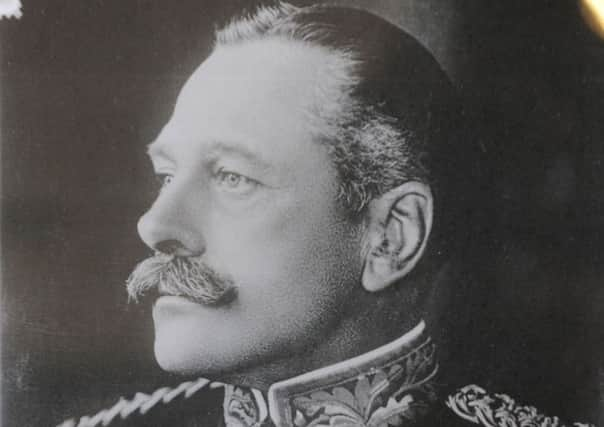Exhibition charting Scots in World War I opens


Now treasures from Scotland’s national art collection have been brought together for the first time to portray how their subjects were affected by the First World War.
Portraits, paintings, sketches and poems feature alongside rarely seen film footage in a new exhibition drawn from the archives of the National Galleries of Scotland.
Advertisement
Hide AdThe show, at the Scottish National Portrait Gallery, lifts the lid on how the war impacted on the likes of music hall artist Harry Lauder, opera singer Mary Garden, Peter Pan author JM Barrie, architect Sir George Washington Browne and folk singer Marjory Kennedy Fraser.
Ordinary men and women drawn into the war effort are featured alongside King George and Field Marshal Douglas Haig, the Edinburgh-born commander-in-chief on the Western Front for most of the war. The exhibition, which opens on Monday to coincide with the 100th anniversary of the war starting, explores the strident opposition to the war from Labour politicians such as James Keir Hardie and James Ramsay MacDonald, as well as artists like poet Margaret Sackville and William McCance, the latter being imprisoned as a conscientious objector.
It looks at the involvement of John Reith, from Stonehaven, who would go on to become founder of the BBC and was shot in the face by a German sniper; Elsie Inglis, the Edinburgh doctor who set up the Scottish women’s hospitals in France, Serbia and Russia; and Flora Drummond, a militant Glasgow suffragette who put her campaigning on hold to help the war effort.
The exhibition recounts how entertainer Sir Harry Lauder was praised as “Scotland’s greatest ambassador” for his efforts to maintain moral among troops.
Aberdeen-born singer Garden was at the height of her fame, performing with the Chicago Opera Company, when war broke out. She disguised herself as a man to attempt to enlist and nursed with the Red Cross.
Kennedy Fraser, a Perth-born musician and folk song collector, was one of the founders of Bangour Village Hospital in West Lothian, where many victims of shell shock were treated.
Advertisement
Hide AdGlasgow architect Sir George Washington Browne lost all three of his sons in the conflict, while Barrie, born in Kirriemuir, Angus, lost an adopted son.
The exhibition follows an approach to the National Galleries by the Imperial War Museum in London to become part of a nationwide series of major events.
Advertisement
Hide AdJulie Lawson, chief curator at the portrait gallery, said: “We don’t have the responsibility to tell the full story of the war – other galleries are able to do that.
“What we have been able to do is to look at the individuals who are represented in our collection, find out what their stories were and what happened to them. The premise of the exhibition is that this was a war that affected every individual and completely changed society.”
Christopher Baker, director of the Scottish National Portrait Gallery, said: Our hope is that this moving exhibition will remind our many visitors of the terrible sacrifice and enduring impact of the Great War and the role that Scotland played.”